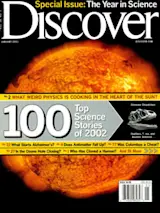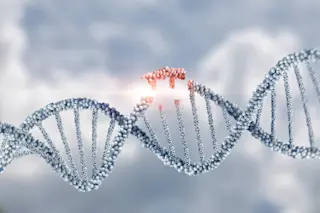70. Japanese Move DNA With Laser
A molecule of DNA is extremely difficult to manipulate, simply because it is so small. So when biologists experimenting with gene therapy want to insert a single strand into a cell, they often wind up injecting dozens. What researchers really need is a tiny pair of tweezers—and soon they may get it. Researchers in Japan recently developed a way to use lasers to grip a DNA molecule at any point along its length, move it to a desired location, and then let it go. The technique, developed by physicist Ken Hirano and his colleagues at the University of Tokushima and the Toyohashi University of Technology, suspends DNA molecules in a water-based solution of microscopic polystyrene beads. To grab the DNA, Hirano focuses a laser beam on a point on the strand. The beam creates a slight electrical field that attracts a cluster of about ...














